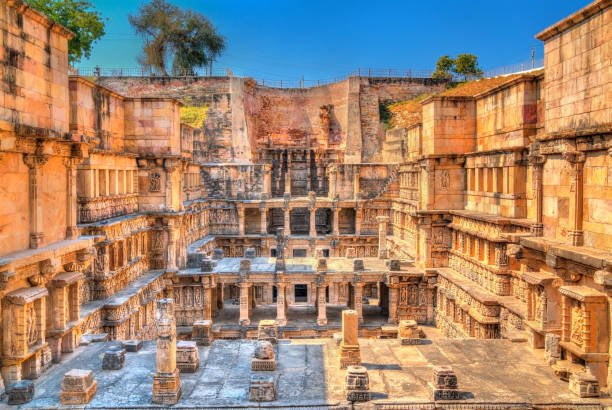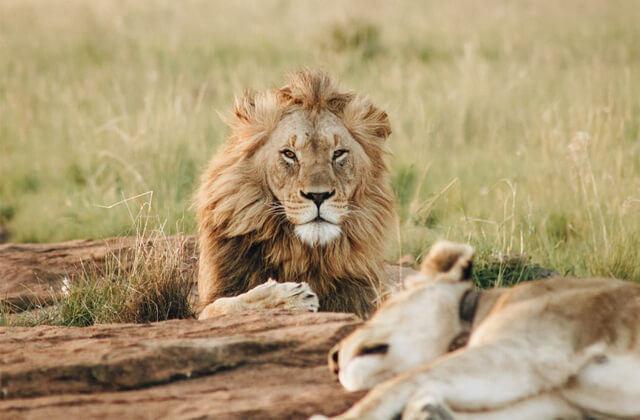Winter is the busiest tourist season of the year. With the holiday season in full swing across the world, people from all over the world go to India with their families and friends to explore and discover the country’s rich legacy, culture, and natural diversity.
Gujarat is a popular tourist location for winter tours in India. We bring you the top places to visit in Gujarat to make the most of your winter vacations in India, with Runn Utsav in the offing and pleasant weather making it a great time to explore the huge cultural and archaeological heritage.
Gujarat might be visited for a number of reasons. From dinosaur fossil fields to Gir, the only home of Asiatic Lions outside of Africa, to Neolithic cave paintings to the stone masonry of a succession of new and old civilised buildings, there is something for everyone.
Gujarat has it all, from the wonders of Jain architecture to the Hindu temples of Somnath and Dwarka rising out of the Arabian Sea, to the seasonal island of Kutch, which turns into a hardened white salt desert in the summer and where local artisans weave India’s finest textiles while battling the inhospitable elements of Little Rann.
With so many holiday alternatives available in Gujarat, we’ve compiled a list of the top ten.
Gujarat has several interesting sites to visit. Please keep in mind that October to March is the best season to visit Gujarat because the weather is lovely.
10. Junagarh

Junagad, literally “Old Fort,” is a fortified city rich in history.The Babi Nawabs ruled Junagad, which is filled with Mosques, Hindu and Buddhist temples, and other ancient landmarks, until India’s independence.Surprisingly, the Nawab of Junagad intended to assist Pakistan after partition, but he had little alternative but to transfer to Pakistan because the majority of the population was Hindu.
Junagad is largely ignored by tourists and is primarily used as a base for visiting Gir National Park.However, there are some great historical landmarks in this city. Mahabat ka Maqbara is an exceptional example of architecture. Here you will also locate an Ashokan Rock Addict. Several Jain temples built on the peaks of nearby hills are also close to the city.
09. Ahmadabad

Ahmedabad, India’s fifth largest city, is Gujarat’s commercial centre and one of the greatest destinations to visit in the state. The city is known for its rich culture, beautiful architecture, and lively people. In the 11th century, King Karnadev founded Ahmedabad, which was known as Karnawati until Sultan Ahmed Shah conquered the kingdom and renamed it after himself in 1411.
Bhadra Fort, well-planned ancient structures, mosques, and lakes are among Ahmedabad’s tourism attractions. Along with the nearby modern marvel Akshardham Temple in Gandhinagar, Mahatma Gandi’s ashram, known as Sabarmati Ashram, is one of the city’s primary draws.
The city’s historical treasures include Bhadra Fort, Jhoolta (shaking) Minarets, and Teen Darwaza. Natural wonders include Kankaria Lake and Vastrapur Lake.For a cultural immersion experience, visit Ahmedabad during one of the city’s major festivals. The most well-known festivities here are Uttarayan (Makar Sakranti) and Navratri, which are both celebrated with fervour and gusto.Kite flyers from all over the world gather to show off their skills at the International Kite Festival, which is celebrated with tremendous excitement.
Ahmedabad is also known for its delectable cuisine. Because of the white revolution and the quantity of dairy products in the state, the city is known for its ice cream. The locals are also known for their sweet tooth. For foodies, Khau Galli in Law Garden and Khan Pan Bazaar in Manekchawk are the places to go for real Gujarati flavours.
Excursion Off the Beaten Path Even if you are not interested in architecture,
Adalaj ka Vav, a 5-story step well located approximately 18 kilometres from the city centre, is a must see. In 1499, Muslim king Mehmud Begda built Adalaj Vav for Queen Rani Roopba, the widow of Vaghela chieftain Veer Singh.
The step well, or ‘Vav’ in Gujarati, is a stunning example of architectural fusion of Indian and Islamic components. The inside of this five-story step well are known for their beautiful carvings.
Adalaj Vav is steeped in history and has a fascinating folklore attached to it. According to tradition, Muslim King Mohammad Begda invaded, defeated, and killed the local ruler Veer Sing. Begda is reported to have been enamoured with the lovely queen and wished to marry her. Once he built the step well, the queen pledged to help him.
Begda commissioned the building of the step well, which was completed in record time. Begda pressured the queen to make good on her vow to marry him. However, the queen,
08. Vadodara/Baroda

One of Gujarat’s most renowned tourist locations is Vododara, often regarded as the state’s cultural capital.Following the expulsion of the declining Mughals by the Gaekwads, the Marathas chose Vadodara as their capital. The city is a seamless blend of the past and the contemporary. Under Maharaja Sayajirao II’s leadership, the city grew and developed, and it had considerable autonomy even throughout British rule in India.
Some of the things to do in Vadodara are the Kadia Dungar Caves, Lakshmi Vilas Palace, Nazarbaugh Palace, Makarpura Palace, Sursagar Talav, and the lovely Sayaji Baug.
Sayaji Baug is also known as Kamati Baug.There are 45 hectares of garden grounds, two museums, a planetarium, a zoo, and a toy train.
07. Champaner-Pavagadh Archaeological Park

The Champaner Pavagadh Archaeological Park is located 50 kilometres east of Baroda City. In 2004, UNESCO designated this ancient site, which contains religious structures and remains going back to the eighth century.
History buffs, as well as those interested in culture and architecture, should go. The site, which includes military, ecclesiastical, and agricultural facilities, was constructed and expanded during a 600-year span. It is the only pre-Mughal site that has remained intact since it briefly served as the capital of Gujarat under independent Sultan Mehmud Begda.
The Jama Masjid, which was built under Begda’s reign and used as a model for subsequent Friday mosques around India, is a notable example of Indo-Islamic fusion architecture. Residential buildings, military precincts, palaces, agricultural buildings, and water-retention installations are among the remnants at this archaeological site.
A prominent Hindu shrine known as Kalika Mata Temple is located on the top of Pavagarh Hill and attracts a large number of pilgrims throughout the year.
06. Sasan Gir National Park

Sasan Gir National Park, located in the Junagad District, is one of India’s most frequented tourist destinations.It’s the only site in Asia where you may observe the king of the jungle roaming free. The Asiatic Lions are the main draw, but this protected area offers much more.
The park is home to hyenas, leopards, marsh crocodiles, antelopes, sambar, and a variety of bird species, making it an ideal candidate for one of India’s best wildlife sanctuaries.
Although lions draw visitors, birdwatching aficionados go to Gir for one of India’s best bird watching opportunities.
The optimum time to visit Gir National Park is from November to March, but for the best possibilities of seeing wildlife, travel between November and March.
05. Dwarkadhish Temple

Dwarkadheesh Temple, located on the Gomti Creek, is one of India’s most beautiful temples, said to have been erected by Lord Krishna’s grandson. The temple, which appears to rise from the Arabian Sea, is known for its intricately carved construction. It is one of Hinduism’s holiest temples, and it is part of the Char Dham Yatra, the holiest of all Hindu pilgrimages.
Lord Krishna and his Yadava Clan settled at Dwarka, according to legend.
When he died in Krishna avatar, the entire Dwarka Island was flooded. Recent archaeological investigations have backed up these claims, revealing that Dwarka is one of six ancient towns that formerly thrived in this region.
04. Rani ka Vav, Patan

Rani Ka Vav is a stunning step well in very good condition, one of the rare monuments created by a queen for her beloved monarch. It was commissioned in 1063 by Rani Udayamati in honour of her late husband, King Bhimdev I.
The step well was swamped by water and sediment from the adjacent Saraswati River shortly after it was completed. This Vav was only excavated and desilted in the 1980s by the Archaeological Survey of India (ASI).
The structure uncovered was a spectacular exhibition of carved sculptures, niches, and pillared pavilions. Rani ka Vav is a UNESCO World Heritage Site that is one of the world’s largest and most magnificent step wells.
This subterranean step well descends through a series of stepped passages with pillared pavilions. The Dasavataras, or ten incarnations of Hindu god Vishnu, are the core motif of the beautifully carved statues.The avatars are accompanied by sadhus, brahmins, and apsaras.The’solah shringar,’ or the The sculpture of apsaras painting their lips and beautifying themselves in diverse styles represents 16 ways to make up to look more desirable. In this vav, there are 400 carving niches on the walls.
03. Bhuj

Perhaps “steeped in history” was invented to describe Bhuj specifically.With over 4000 years of history, Bhuj is a cultural melting pot and one of the best places to visit in Gujarat for cultural immersion, with prehistoric ties.Mahabharata, Indus Valley, and Alexander the Great’s time, to regional sultans, British, and then modern India.
Bhuj’s major attractions are the Aina Mahal (Mirror Palace), Parag Mahal, Kutch Museum with unique antiquities, Ramakunf Stepwell, and Hamirsar Lake.But Bhuj is more than just a tourist destination; it’s the cultural contacts, such as traditional handcrafted textiles and crafts, enamelled jewellery, and cultural excursions to nearby villages, that attract the majority of international visitors.
Bhujodi is one such cultural side trip. Bhujodi is a weaving community located 7 kilometres from Bhuj. Another place to visit is Ajrakhpur, a block printing village 15 kilometres from the city. You can meet craftspeople, view demonstrations, and buy products during these visits.
02. Somnath

The first and most revered of Lord Shiva’s 12 Jyotirlingas is Somnath.According to tradition, the Hindu moon deity Soma constructed a gold-encrusted temple to honour the Lord’s splendour and compassion, and the building became known as the Somnath Temple.According to mythology, Ravana erected the temple in silver, Krishna in wood, and King Bhimdev in stone.This temple, which stands on the Arabian Sea’s coasts, has been demolished and rebuilt several times, most recently after India’s independence.
Thousands of people visit Somnath every year to seek Lord Shiva’s blessings, making it one of India’s most important religious places.
01. Rann of Kutch

In Gujarat, there is a phrase that goes like this: “Kutch Nahin dekha to kuchh nahin dekha,” which means “if you haven’t seen Kutch, you haven’t seen anything.
The Rann of Kutch is a beautiful symphony of salt and sand, nestled between the Arabian Sea and the huge Thar Desert.. On a full moon night, this white symphony reaches its peak. What makes Kutch extra stranger is that it is submerged in water during the monsoon.
For the remaining eight months of the year, it’s a large stretch of white salt, giving it the look of a white desert. Cultural programmes honouring Gujarat’s rich culture are held on full moon nights.
Dhordo is where most rituals and traditions take place. When winter hits, the Great Flamingos from Siberia flock to the Great Rann of Kutch to breed, giving the white desert a rosy colour.Many migratory bird species flock to the area, including Busturds, Blue Tailed Bee Eaters, Ceraneous Vultures, and Demoiselle Cranes. Wild Ass Sanctuary in Gujarat, located in the Little Rann of Kutch, is the only place in the world where the endangered Indian Wild Ass can be found.
The Rann Mahotsav is the best time to visit Kutch if you want to see it at its most bright and brilliant. It’s a kaleidoscope of music, dancing, and the state’s many hues and cultures. The white desert comes to town for a three-day yearly razzmatazz.
Some of you may be wondering where the other names on this list that should have been included are. However, because we could only choose ten, we could only discuss these. Some hackles may rise as a result of prominent omissions such as Jamnagar, Balasinor with its Jurassic Park, and Saputara, Gujarat’s lone hill station, but we would like your comments and more names so that we might have a Part II of the Top 10 Places to Visit in Gujarat.



